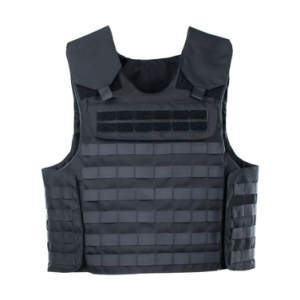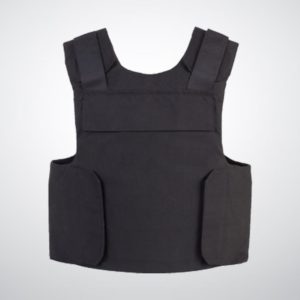DELTA 2-90 Ballistic Vest with stab and ballistic protection.
FEATURES
- Ballistic – NIJ Level II Soft Armour – NIJ 0101.04
- Stab – HOSDB KR1
- The vest offers protection for the front, back & sides
- MOLLE webbing on the front and sides
- Adjustable shoulders and sides
- Front and back hard armour plate pockets (hard plates not included)
- Full freedom of movement, no interference with head movement and weapon handling
- Material Suppliers: Dupont, Teijin, Dyneema, and Twaron
OPTIONAL EXTRAS
- Hard Armour Plates: Level III & IV ICW
- Groin Protection: MOLLE Optional – NIJ Level IIIA
- Upper Arm Protection: MOLLE Optional – NIJ Level IIIA
- Thigh Protection: MOLLE Optional – NIJ Level IIIA
COVERT OR OVERT ARMOUR?
Body armour is produced in 2 main styles – covert and overt. Covert armour is designed to be worn under clothes. Protective vests that are designed to be worn over clothes are known as overt.
Covert vests are designed to be as thin as possible, making them unnoticeable when worn under clothing. As they are worn under clothes they will often feature moisture-wicking fabrics which will help to keep the wearer cool when worn for long periods. They are suitable for people that don’t want others to know they are wearing a piece of body armor, for example, door supervisors, undercover operatives, and close protection officers.
OVERT VESTS
These are designed to be worn over your clothes. Generally, they will be black, however, they are also produced in a variety of colors when required. For example, bulletproof vests worn by members of the media in war zones are blue, security personnel will often wear high visibility bulletproof vests, and vests worn by the military will come in camouflage designs. Overt armor is normally thicker and harder to wear than covert armor. Overt vests are worn by people such as police officers, security guards, and members of the military.





Reviews
There are no reviews yet.